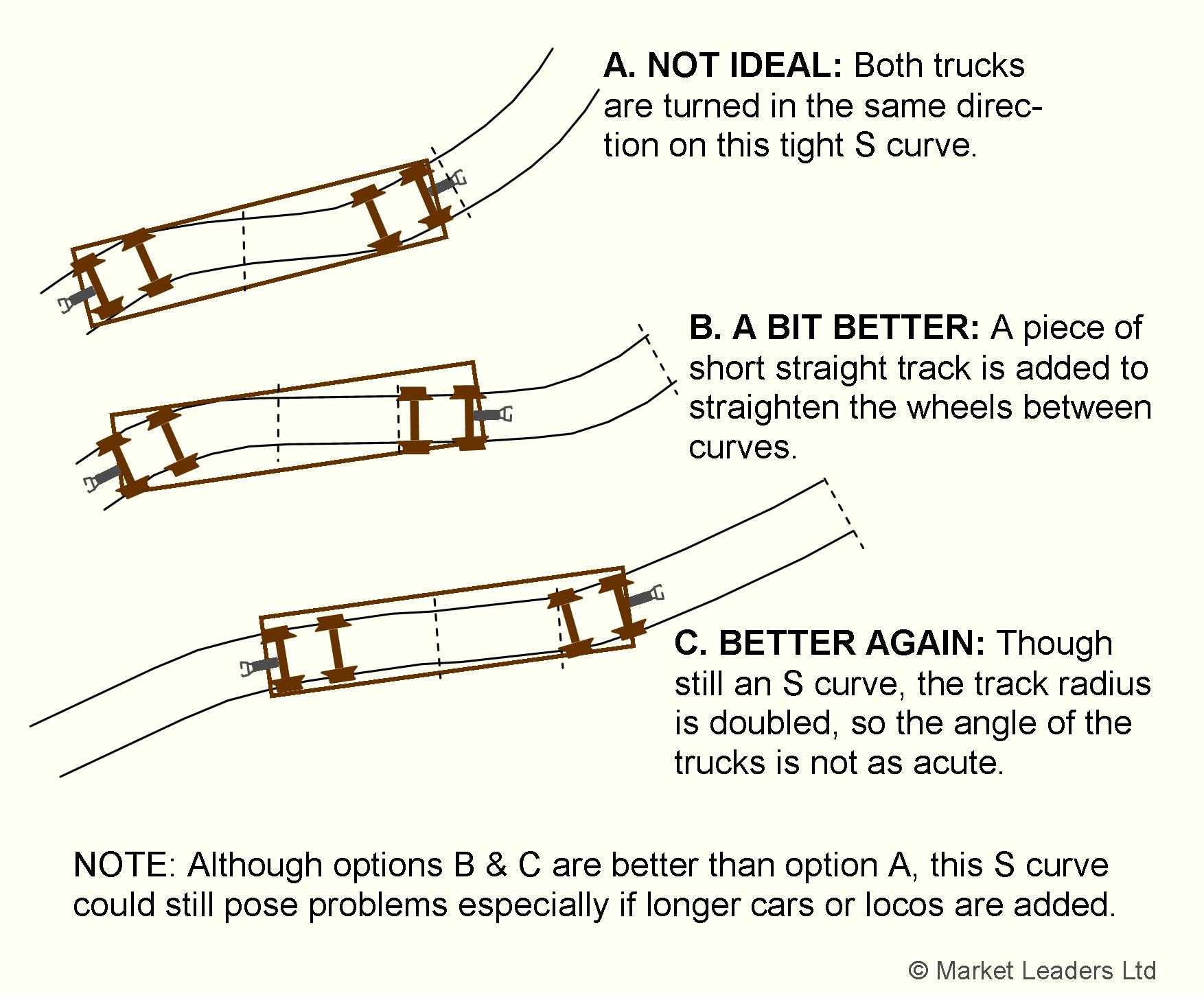Everything on model trains, model railroads, model railways, locomotives, model train layouts, scenery, wiring, DCC and more. Enjoy the world's best hobby... model railroading!
Problems With Model Railroad S Curves
 Curves look good and generally necessary to turn trains and keep them running without coming to a dead end, but curves use up plenty of room on a layout. And, the radius of the curves will affect the type rolling stock that comfortably operate without derailing and still look convincing when navigating the curve. Longer passenger cars, auto carriers, and large articulated locos will generally require a large curve radius.
Curves look good and generally necessary to turn trains and keep them running without coming to a dead end, but curves use up plenty of room on a layout. And, the radius of the curves will affect the type rolling stock that comfortably operate without derailing and still look convincing when navigating the curve. Longer passenger cars, auto carriers, and large articulated locos will generally require a large curve radius.
S-curves are synonymous with derailments and uncoupling, because having curves going in opposite directions makes it harder for trains to stay on the track. The frame of each car needs to turns in one direction when entering the S curve, and then turn the other way when exiting the s bend. The coupler on the rear end will attempt to follow it through the movement. At the same time the following car will be taking a slightly different route as it won’t have entered that part of the curve. This will produce strong sideway forces on the coupler trying to pull it off the track. So, even though it can be entertaining to watch trains navigating S curves, they are fraught with potential problems.
Download your FREE report – 33 Track Planning Mistakes To Avoid
Share it with your friends.
One Response to Problems With Model Railroad S Curves
Leave a Reply




















That explains my derails. I’ll need to make changes. Ta for help.